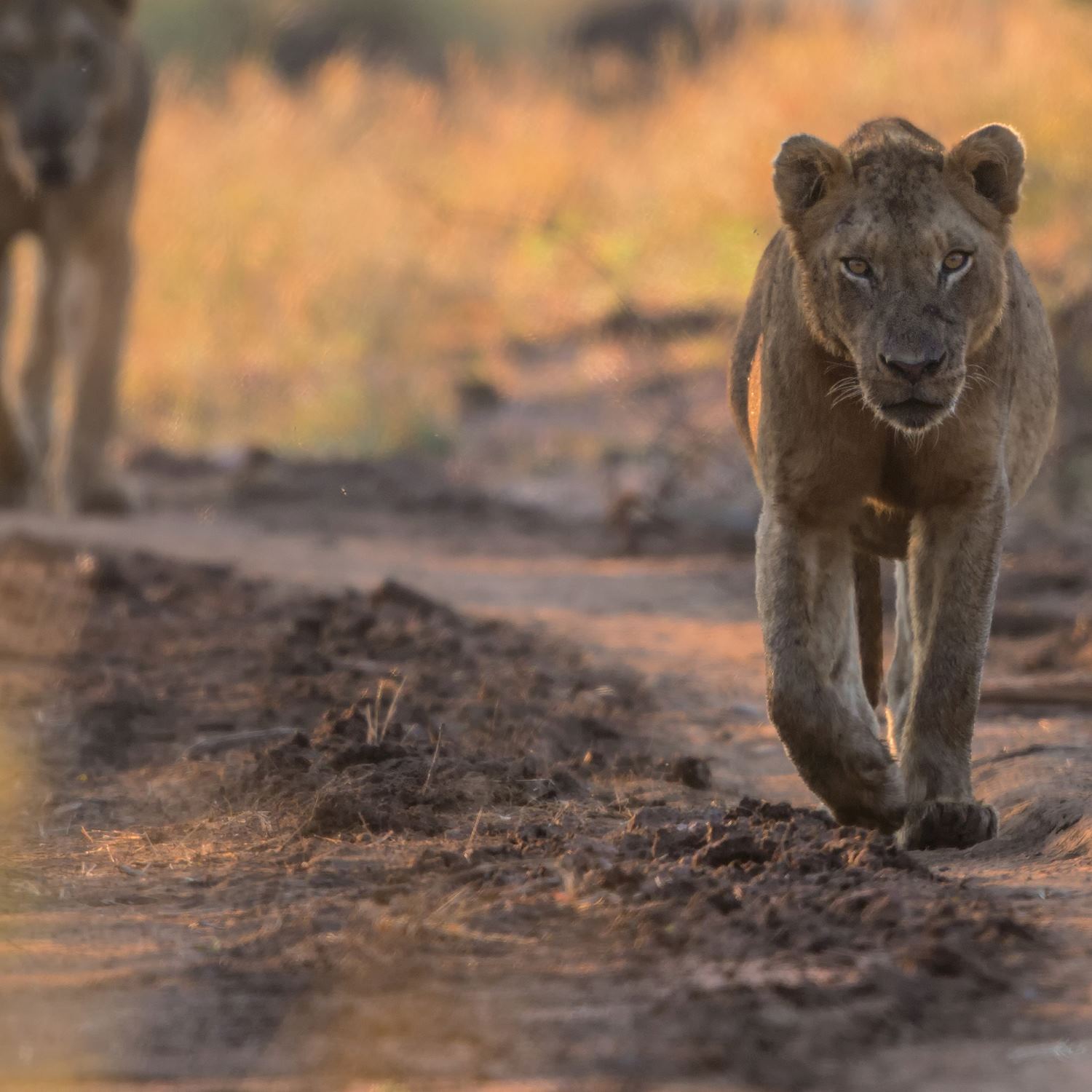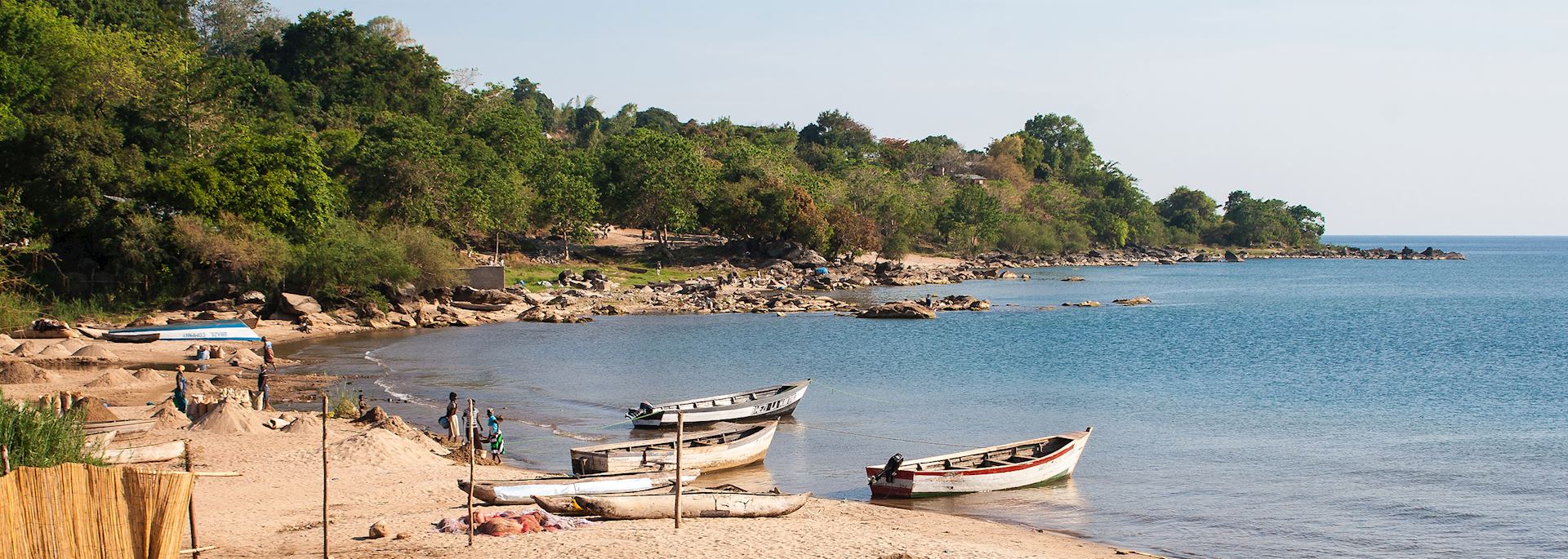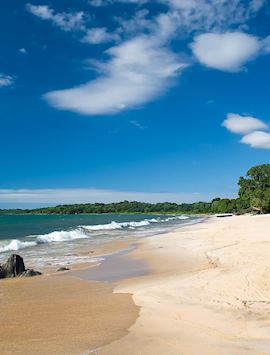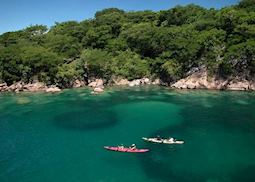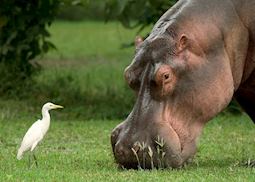The best time to visit Malawi is during the dry season between May and October. It’s a cooler time of year, with bright sunshine, lush green landscapes, fresh evenings, and temperatures anywhere between 64°F and 91°F.
Temperatures start to rise in September and remain in the eighties throughout the rainy season, which runs from November to April. The heaviest rains are often in December, January and February.
Because of Malawi’s varied landscape, regional variations in weather are significant. The lower lying lake shore areas are warmer all year round. Temperatures in the highlands are refreshingly cool in the day, with chilly evenings, particularly in winter.
Month-by-month guide for traveling in Malawi
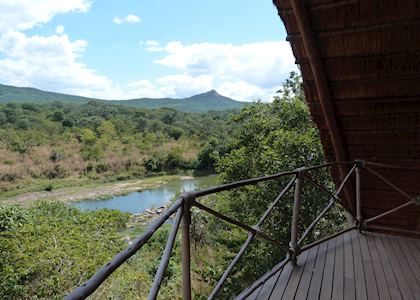
Visiting Malawi in January
The rains are in full flow during this month, with large impressive thunderstorms rolling through the country regularly. However, this is a good time for bird watchers as migratory birds from the Northern Hemisphere are evident in all of Malawi's national parks. Many of the lodges around the shore of Lake Malawi will be closed at this time.
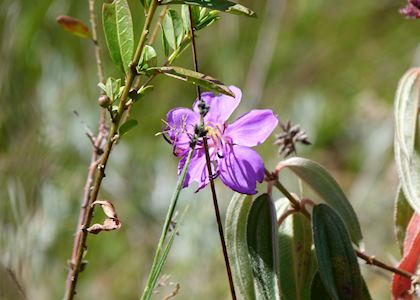
Visiting Malawi in February
The rains continue to fall regularly and the birding is spectacular; particularly in Nyika National Park. Many terrestrial orchids come into bloom across the valleys and they can be seen in colorful patches across the plateau.
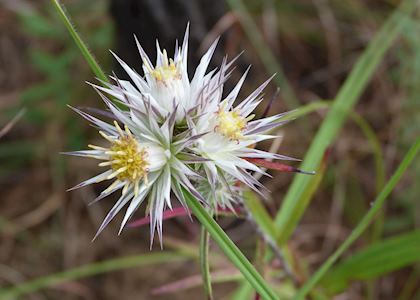
Visiting Malawi in March
The weather is still unsettled in March, with regular rains that slowly peter out as the month goes on. The young birds will be growing quickly and spreading their wings for the first time to prepare for the long journey back to the Northern Hemisphere for the summer. The flowers are in full bloom, providing much food and pollen for insects, which in turn feeds the birds, providing them with the energy they need for their epic journey.
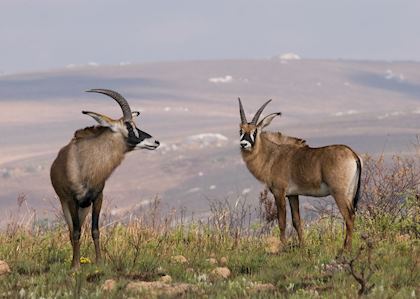
Visiting Malawi in April
The country begins to dry out as the rains subside, replaced with increasing sunshine and stable temperatures. Antelope are in rut in the national parks and spectacular clashes between the rival males can often be observed.
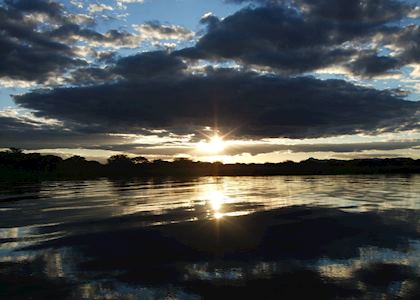
Visiting Malawi in May
With the days becoming more sunny and cooler, the crocodile courtship season begins in Liwonde National Park and Majete Game Reserve. The courtship process begins with males bellowing, bubble-blowing and fighting as they strive to establish dominance. Males also swim with their head up for display purposes. The female usually mates with the most dominant male in the vicinity; usually the oldest, largest male.
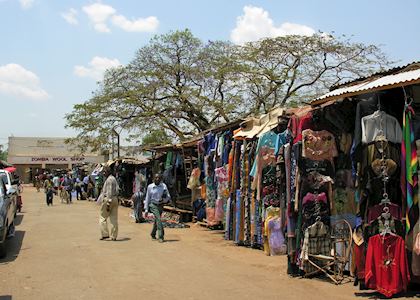
Visiting Malawi in June
The days are long and sunny, but the temperatures drop significantly at this time of year. The evenings and mornings are very cold in the highland regions, with log fires lit for both tourists and locals. The elephant population in Liwonde National Park group together in the drier periods around the Shire River for easier access to water and the more nutritious vegetation along the river’s edge. Lillian’s lovebirds congregate in large flocks of hundreds from June to August in Liwonde National Park.
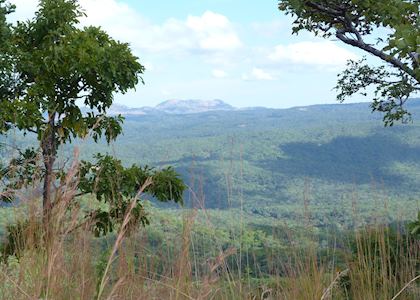
Visiting Malawi in July
As the cooler, sunny weather continues, sightings of larger elephant herds are plentiful, with numbers often reaching into the hundreds. The crocodiles will mate regularly — mating takes about ten minutes and occurs in the water. Two months later, the female lays her eggs and buries them underground (usually around 50 eggs). She then guards them by lying on top of the burying site, fighting off any potential predators.
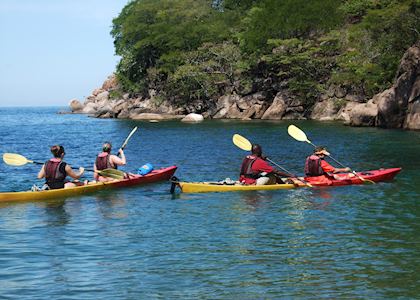
Visiting Malawi in August
The weather is warming, even at night, with daytime peaks averaging around 86°F and night-time averages rising to 50°F. Animal herds are growing in size and limited space near the water leads to tension between the animals. It's a delightful time of year to visit Lake Malawi, with the temperatures perfect for water sports or relaxing in the sun.
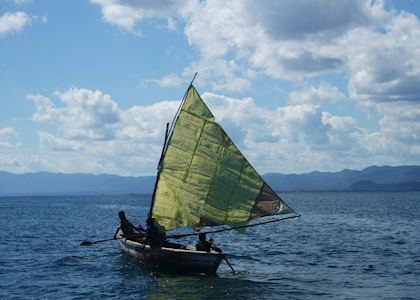
Visiting Malawi in September
Night-time temperatures rise rapidly within the month, while daytime averages soar well into the 70°Fs. The sun shines, the skies are clear and it is extremely dry. Concentrations of elephant and other game are great, and it is also a popular time of year to visit Lake Malawi, where the windy afternoons make for perfect sailing conditions.
Events & Festivals
- Lake of Stars Festival (late September): A three-day annual festival featuring musical acts from Africa and the UK, on the shores of Lake Malawi.
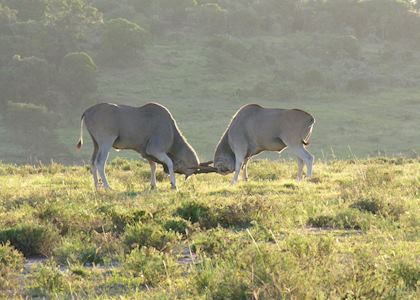
Visiting Malawi in October
Daytime temperatures regularly rise above 100°F and nights are warm; averaging in the high teens. The world's largest antelope, the majestic eland, can often be seen in the Nyika National Park as their herds start regrouping for the breeding season. The larger herds vary in size from around 100 to 320 animals, making for an impressive sight.
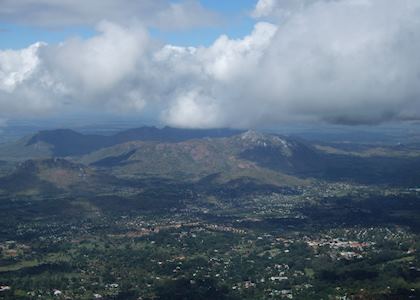
Visiting Malawi in November
November is usually a very interesting month, with the first few storms of the emerald season arriving. The beginning of the rains (the green season) usually coincides with the arrival of many migrant birds who come back from the less hospitable climates north of the Equator.
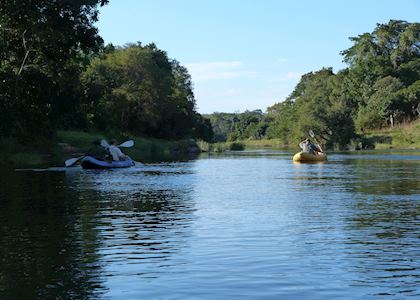
Visiting Malawi in December
The rains become more regular in December, with thunderstorms occurring every few days. High-pitched chirping sounds of baby crocodiles alert the mother that the incubation period is over. She then breaks open the sand-covered chamber and assists the hatchlings out of their shells by rolling the eggs between her tongue and palate. The mother crocodile then delicately transports them in her mouth to the water’s edge, and continues guarding them for two more weeks.
Why travel with Audley?
- 100% tailor-made tours
- Fully protected travel
- Established for over 25 years
- 98% of our clients would recommend us
Travel advice
Practical tips for traveling to Malawi, from social protocols to guidance on money matters, with a link to the latest US State Department travel advice.
Trip ideas and travel guides for exploring Malawi
-
![Northern Shores of Lake Malawi]()
-
Lake Malawi vacations ![Kayak Africa's Mumbo Island, Lake Malawi]()
Lake Malawi vacations
Lake Malawi vacations
Read this guide -
Wildlife vacations in Malawi ![Liwonde National Park, Malawi]()
Wildlife vacations in Malawi
Wildlife vacations in Malawi
Read this guide -
Honeymoons in Malawi ![Northern Shores of Lake Malawi]()
Honeymoons in Malawi
Honeymoons in Malawi
Read this guide
